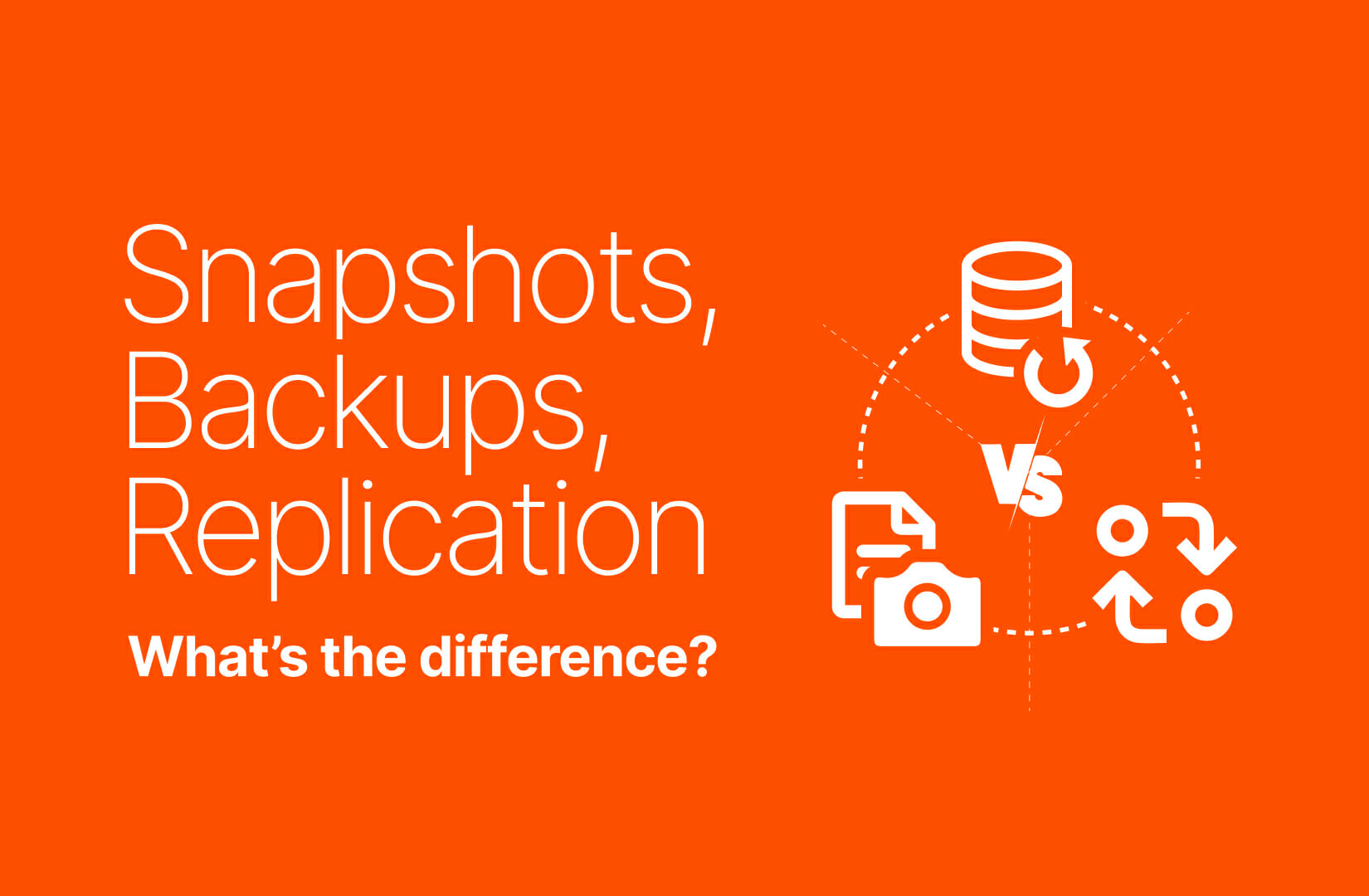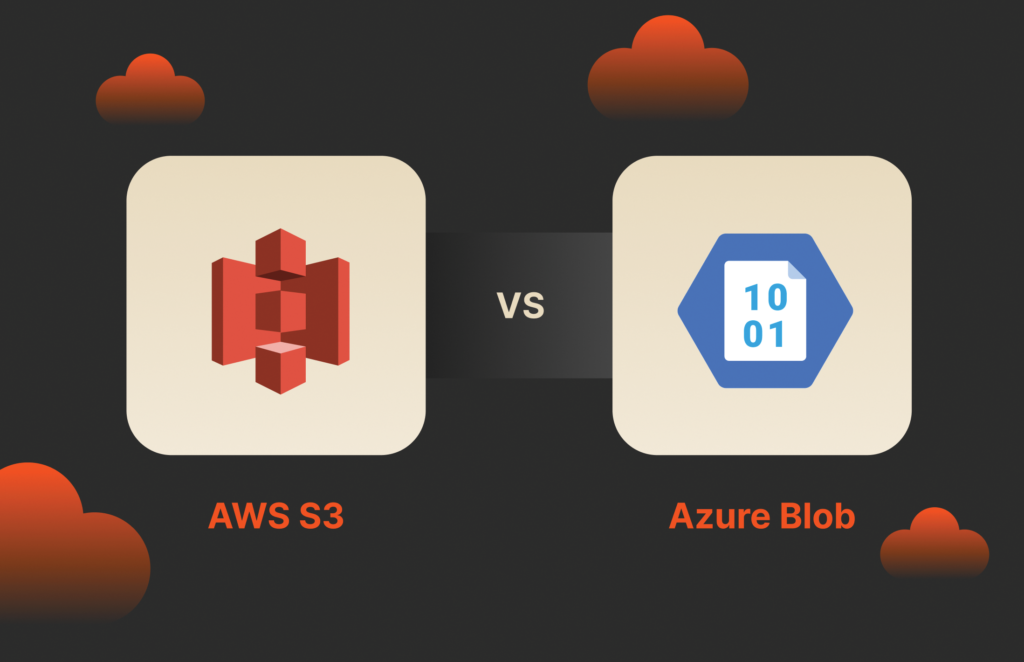Backups, snapshots, and replication are often confused but are slightly different things with the same ultimate goal of protecting your data. Backups are for redundancy, snapshots are for fast retrieval, and replication is for minimizing downtime.
What is Data Replication?
Data replication means copying data to another location, whether it be a storage system within the same data center or, more commonly, to a remote data center as a safeguard against data center failure. It’s the process of storing data in more than one site or node so that all users can share the same data without inconsistency.
The result of data replication is a distributed database that enables users to access data relevant to their tasks without interfering with the work of other systems or teams.
Types of Data Replication
There are various types of data replication:
- Synchronous replication replicates all IO (input/output) as it is written to the data storage system, which commits both local and remote writes before acknowledging to the host that the write is good.
- Asynchronous replication replicates data at specific time intervals—every five minutes, for example—and the changes are then replicated to a remote site. This means that the worst that could happen in this example is that you lose five minutes of data.
- Transactional Replication is when users receive full initial copies of the database and then receive updates as data changes.
- Snapshot Replication is when data is distributed exactly as it appears at a specific moment in time, thereby creating a “snapshot” of data at that moment that is then sent to users.
- Merge Replication is when data from two or more databases is combined into a single database. Merge replication is the most complex type of data replication because it allows both publishers and subscribers to make changes to the database independently.
- There’s also full replication, where the entire database is stored at every site, and partial replication, in which only frequently used fragments of a database are replicated.
When to Use Merge or Transactional Data Replication
Merge replication is typically used in server-to-client environments. It allows changes to be sent from one publisher to multiple subscribers. With transactional replication, data gets copied in real time from the publisher to the receiving database. Transactional replication not only copies the data changes but consistently and accurately replicates each change. Transactional data replication is typically best for server-to-server environments.
What is a Backup?
A backup, also known as a backup and recovery, is the process of creating and storing copies of your data that you can use to restore your organization’s services in the event of a primary data failure due to a power outage, ransomware attack, or other type of disaster.
Backups let you roll back your systems to a previous point in time before the data loss or corruption occurred in order to restore services. You can store backups on the same server as the original data, but it’s generally better to store them on a different server or separate system such as a secure cloud server for the sake of creating data redundancy.
Learn more about different types of backups >>
What is a Snapshot?
Snapshot copies the state of a system at a certain point in time, preserving a virtual picture of your server’s file system and settings.
Unlike a backup, which performs a full copy of your data, a snapshot only copies the settings and metadata required to restore your data in the event of a disruption. You still need to store the source files for your snapshots in a separate location to be able to retrieve them.

Cyber Resilience, Pure and Simple
Fortify your data and guarantee uninterrupted business operations.
Data Replication vs Data Backup
Data replication and data backup are related but not interchangeable.
Data backup involves restoring data to a specific point in time by creating “save points” on your production servers. These save points can later be restored in the event of file corruption, system failure, outages, or any event that causes any type of data loss. Since data backups can take several hours, businesses typically schedule them at night or on weekends.
Although there’s always a risk of losing data between backups, they’re still a good standard of data protection and are especially suitable for storing large sets of static data long term. Data backups are a key data protection method for industries that need to keep long-term records for the sake of compliance.
Where backups focus on data protection, data replication focuses on business continuity—ie, keeping mission-critical and customer-facing applications running even in the face of a disaster.
When to Use Snapshot Replication
Snapshot replication is generally used when data changes are infrequent. It’s a bit slower than transactional data replication because it moves multiple records from one end to the other end. Snapshot replication is a good way to perform initial synchronization between the publisher and the subscriber.
When you use a snapshot to restore your system, you revert it back to how it was the moment the snapshot was taken. Snapshots are ideal for short-term storage and often used for development and testing purposes. When space for your snapshots runs out, new snapshots will simply overwrite older ones.
Snapshots are also handy when for “quick saves” of your system before installing a major update. If you don’t like the results of the update, you can simply roll back to your last snapshot to restore your system to its previous state.
SafeMode Snapshots for Ransomware Protection
Pure’s SafeMode Snapshots was designed to protect organizations from ever-more-damaging and ever-increasing ransomware attacks. SafeMode significantly reduces the risk of a ransomware attack.
A high-performance data-protection solution built into FlashArray, SafeMode puts your system’s volumes, snapshots, hosts, and other objects in a “destroyed” area visible in the GUI, where they remain recoverable for 24 hours. After 24 hours, SafeMode eradicates these objects permanently.
SafeMode offers:
- Complete Immutability—Secure data from encryption loss due to malicious attacks or admin mistakes, even if admin credentials are compromised.
- Easy Backup Integration—FlashBlade works with existing software and tools, so you don’t need to change your software to improve backup and recovery objectives.
- Rapid Restore—Petabyte-scale recovery gets your business back online.
Get started with SafeMode here.







